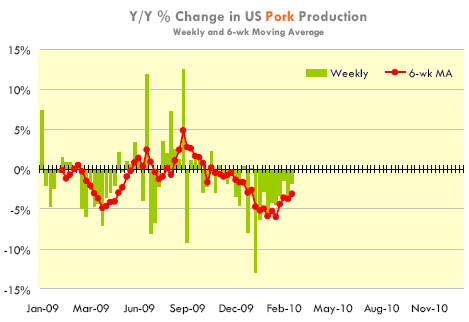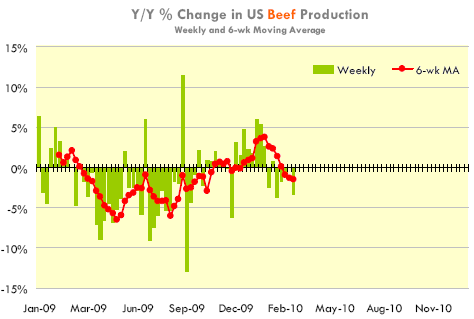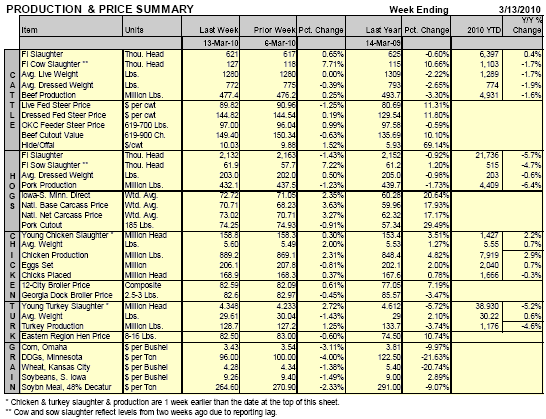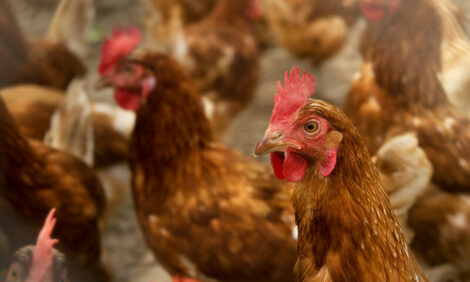



CME: Latest Broiler Production Higher than Week Before
US - Beef and pork output continued to trend below year ago levels for the week ending 13 March, in part due to much lower carcass weights, according to Steve Meyer and Len Steiner.Below, we have reproduced the chart on pork exports that we initially presented in the Friday letter. The x-axis in the initial chart was not centered correctly and gave the impression that the data ran through the middle on 2009. The data was through January 2010 and the revised chart better shows that.

Hog slaughter was down about one per cent for the week thus causing overall pork production to be down 1.7 per cent from the previous year. One item that seems to have recovered in the last few days is the availability of slaughter sows. Weather disruptions caused a shortage of marketable sows in the first half of February but the market has recovered and sow slaughter (albeit with a two week lag) appears to have returned near year ago and five year average levels.
There was some concern that the sharp pull-back in sow slaughter (it declined some 15 per cent between 23 January and 13 February) was indicative of a significant shift in producer attitudes about future expansion. Those fears, however, appear to have been a bit premature and much of the reduction was weather- or transportation-related. While the profitability outlook for US pork producers has improved significantly in recent weeks, plenty of uncertainty remains, especially with regard to US pork exports.


Broiler slaughter is currently running at 3.5 to 4.2 per cent over year ago levels while egg sets have been on average just 0.2 per cent over year ago levels during the period from November to February. Has egg set and chick placement data understated the extent of the expansion in broiler production? It is still too early to say. Do higher weights represent a backdoor way for the industry to expand without actually bringing more birds to market? The answer to that question is likely yet, especially given that corn prices are currently running some 10 per cent below year ago levels while whole broiler prices are up 6.5 per cent compared to a year ago and chicken breast prices are up some 3.6 per cent.












